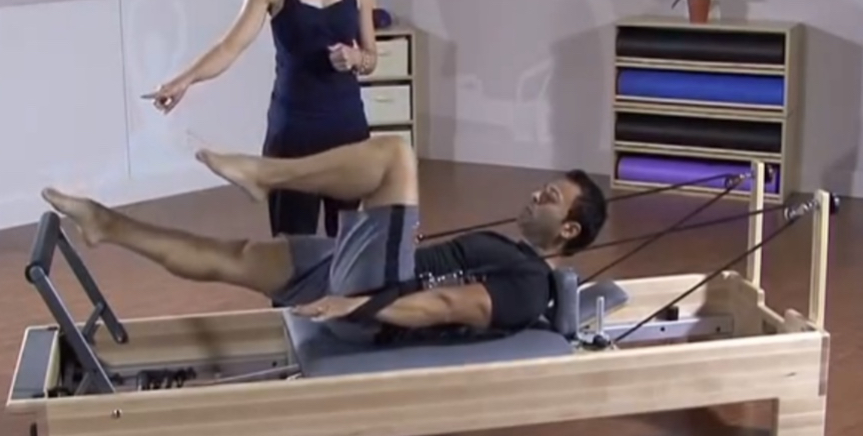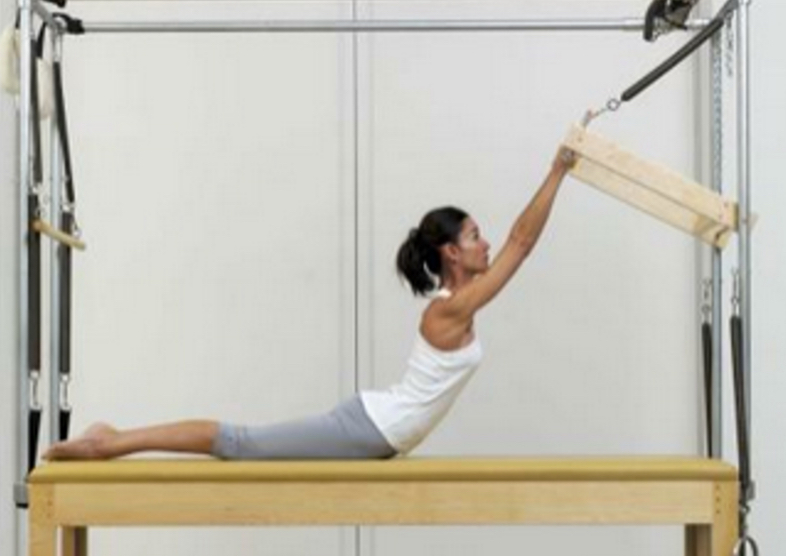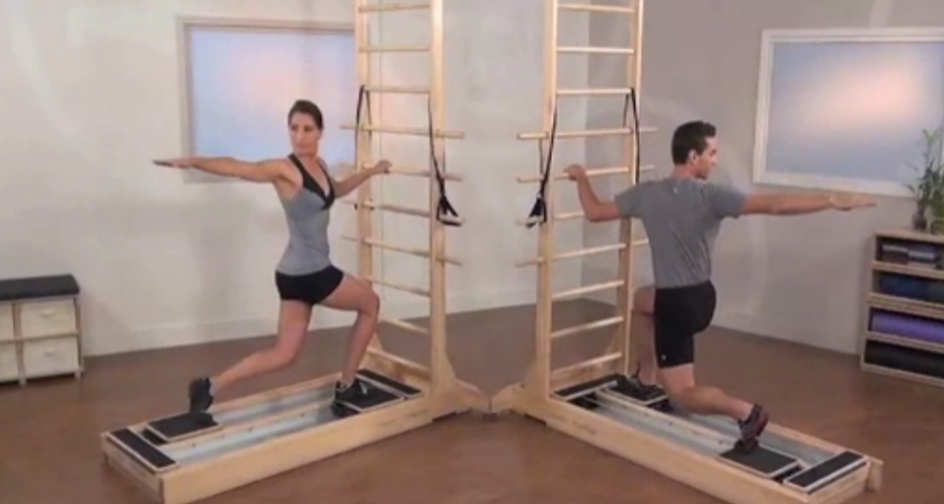pilates and yoga 4/14
1/25
There's no tags or description
Looks like no tags are added yet.
Name | Mastery | Learn | Test | Matching | Spaced |
|---|
No study sessions yet.
26 Terms
pilates
a method of exercise and physical movement designed to stretch, strengthen, and balance entire body
categoriezed as fitness endeavor and important adjunct to physical rehab of all kinds
versatile approach for strength and flexibility training, balance and proprioceptive reeducation, motor learning, postural education, breathing mechanics, body awareness
helps with movement transitions and environmental transitions
facilitates proper structural alignment, spinal articulation breathing and timing of muscle recruitment
increases bone loading in correct alignment
principles of pilates
relaxation
concentration
control
centering
fluidity
precision
breathing
stamina
pilates—relaxation
alleviating tension prior to initiating exercise utilizing breathing to quiet the mind and prepare to focus
pilates—concentration
focus on mind/body connection
improved body awareness in athletes translates to better understanding of body in space and how to control at minute level
leads directly to improved athletic performance in any sports/performing arts
pilates research
most beneficial programs included at least 1-2 sessions/week of pilates/strength; sessions of <60 mins of core-based, strength, or mind-body excs, training programs from 3-9 wks of pilates and core-based excs
pilates—control
exercises designed to be performed with specific muscles controlling the movements
study shows pts with an initial episode of LBP taught spinal stabilization excs 2x/wk for 4 wks had a decreased rate of recurrence which is usually at 60-86%
study shows pts with chronic LBP participating in pilates based excs program 3x/wk for 4 wks reported a significant decrease in pain and disability measurements which was maintained over a 12 mo period
pilates—centering
referees to core muscles or “powerhouse” that must be coordinated to initiate the movements
these include pelvic floor musculature, transversus abdominis, multifidus, obliques
study shows muscle dysfunction in LBP was a problem in motor control in the deep muscles related to segmental joint stabilization
study shows co-activation of the abdominal and pelvic floor muscles during voluntary excs
pilates—fluidity
no static or isolated movements, excs can be done individually or as a continuous program
pilates—precision
every movement and instruction has a purpose that is critical to safe execution of the excs
every excs beings first with activation of core muscles then global muscles
pilates—breathing
proper breathing aides motor control
study shows contraction of specific muscles in postural tasks are affected by respiratory maneuvers
pilates—stamina
slowly increases improving overall endurance with grace of movement emphasized over speed or quantity of repetitions
reformer equipment

cadillac equipment

core align equipment

yoga
traced back over 5000 years to ancient northern indian civilizations
hatha yoga is basis for modern yoga first introduced to the west in late 1800s and early 1900s
western yoga practice utilizes ‘asanas’ or physical poses, ‘pranayama’ or yogic breathing and some component of meditation to achieve a mind-body connection
benefits of yoga
flexibility, strength, posture, breathing, cardiovascular, stress, emotional/cognitive,
yoga—flexibility
stretches all soft tissues including muscles, tendons, facial sheaths surrounding muscles
yoga—strength
varied poses promote upper and lower body strength and stamina as well as core strength
yoga—posture
increases body awareness and understanding of neutral spine posture
coupled with gains in strength and flexibility→improved alignment
yoga—breathing
pranayama/yogic breathing emphasizes mindful, deep breathing that can improve lung capacity and breath control, especially important for athletes as well as clients with pulmonary dysfunction
yoga also boosts oxygen levels in brain
yoga—cardiovascular
lowers BP and HR, optimizes HR variability
yoga—stress
biochemical responses to yoga include decreased hormone NTs, catecholamines, increased oxytocin
yoga—emotional/cognitive
linked to decreased fatigue, improved concentration, mood and immune system
adaptive yoga
refers to modified versions of asanas, pranayama and meditation techniques and is utilized to treat people with a variety of diseases and disabilities: cognitive issues, developmental issues, multiple sclerosis, SCI, TBI, stroke, parkinson’s, etc.
depending on level of impairment therapists will use a variety of props not always utilized in traditional yoga practice to facilitate specific desired postures (blocks, straps, platforms, foam rollers, therapy balls, etc.)
integrating pilates and yoga concepts into tx
improving balance, posture, gait, and stability requires improved core & global strength, motor control, coordination, flexibility
excs are versatile, open and closed chain weighted and NWB, can be performed in any position necessary to isolate a muscle
clinical documentation
demonstrate progress and skill
describe what a particular excs achieves instead of specific pose
name specific muscle groups being worked
explain why a certain excs will enable a pt to perform a specific functional task
describe why increased alignment, strength, felxibilty and so on will aid your pt to complete a functional task and how this exercise approach will accomplish this objective